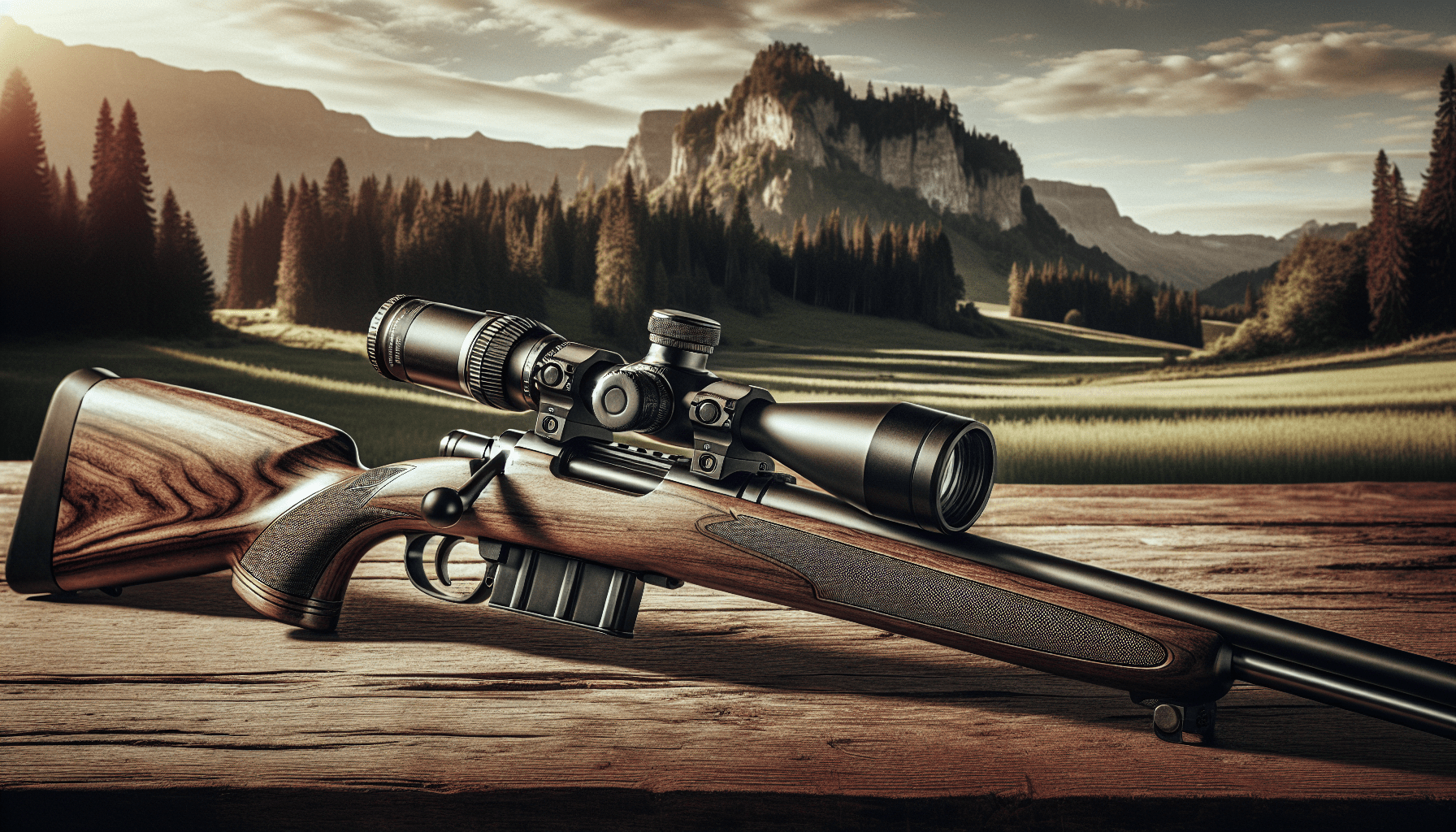In the world of outdoor sports, combining the right equipment can make a significant difference in your experience. If you’ve ever wondered about the feasibility of mounting a spotting scope on a rifle, you’re not alone. It’s a question that sparks curiosity among hunters, bird watchers, and shooting enthusiasts alike. This article delves into the practicality, benefits, and potential challenges of attaching a spotting scope to your rifle, offering insights that will help you make informed decisions for your next adventure. Have you ever wondered if you can mount a spotting scope on a rifle? This question might have crossed your mind while out in the field or at the shooting range. You’re probably curious if the benefits of a spotting scope can be combined with the functionality of a rifle. Well, you’re in the right place!
Can A Spotting Scope Be Mounted On A Rifle?
Let’s address this straight away: typically, spotting scopes are not designed to be mounted on rifles. They serve different purposes and have specific designs optimized for those purposes. That said, we’ll dive a bit deeper into why this is the case, and explore alternative solutions for those who are looking for better sighting options.
Understanding Spotting Scopes vs. Rifle Scopes
To grasp why a spotting scope generally isn’t mounted on a rifle, it helps to first understand the core differences between spotting scopes and rifle scopes.
Spotting Scope
A spotting scope is a high-powered portable telescope with additional optics to present an erect image, optimized for daytime use. Typically, these scopes are used for:
- Birdwatching
- Wildlife observations
- Hunting
- Target shooting (for spotting shots)
Rifle Scope
A rifle scope, on the other hand, is specifically designed to be mounted on a rifle and assist with aiming by magnifying the target and providing a reticle:
- Precision shooting
- Hunting
- Tactical engagements
Design and Functional Differences
Magnification and Field of View
| Feature | Spotting Scope | Rifle Scope |
|---|---|---|
| Magnification | Often higher (15-60x) | Typically lower (2-30x) |
| Field of View | Narrower due to high magnification | Wider to accommodate tracking targets |
Durability and Build
Spotting scopes are usually more rugged in terms of the body, but they don’t emphasize recoil resistance since they are not meant to be attached to a firearm. Rifle scopes are specifically built to withstand the intense recoil produced by firing a rifle.
Why Spotting Scopes Are Not Ideal for Mounting
Eye Relief
Spotting scopes have longer eye relief to provide comfort for extended viewing periods, but this can make quick target acquisition more difficult when mounted on a rifle.
Focus Mechanism
Focus adjustments are easier to handle with spotting scopes when used independently. Mounted on a rifle, it might complicate these adjustments, particularly under stress or in quick-response scenarios.
Parallax and Calibration
Rifle scopes come pre-calibrated for specific distances to reduce parallax and offer more precision for shooting. A spotting scope doesn’t have the same calibration, which could lead to inaccuracies when targeting.
Alternatives to Spotting Scopes
If you’re seeking higher magnification or better target spotting, consider the following alternatives to mounting a spotting scope on your rifle:
High-Power Rifle Scopes
High-power rifle scopes can offer high magnification levels, some going up to 30x. This could suit your need for longer-range shooting without compromising on functionality and durability.
Binoculars
High-quality binoculars can be a great middle-ground option for spotting your target. They provide good magnification and are easy to carry in the field.
Compact Spotting Scopes
While not typically mounted on a rifle, compact spotting scopes can be used in conjunction with your firearm. You can spot your target using your handheld spotting scope and then transition to your rifle scope for the shot.
Digital Spotting Devices
Technological advancements have introduced digital spotting devices that offer high magnification and the capability to mount on rifles. However, these devices are still niche and can be expensive.
How to Use Both Scopes Effectively
Practice Spotting and Shooting Separately
Get proficient at using your spotting scope and rifle scope independently. This will save time and make you more efficient when both are needed.
Use a Spotter
Having a second person as a spotter can be incredibly beneficial. Your spotter uses the spotting scope while you focus on aiming and taking the shot.
Sight Your Rifle Properly
Make sure your rifle scope is properly sighted in. This reduces the need for long adjustments, especially in situational stress.
FAQ About Spotting Scopes and Rifle Scopes
Can You Mount a Large Rifle Scope on Your Rifle?
Yes, large rifle scopes designed for long-range shooting can be mounted on rifles. Be sure that your rifle can adequately handle the size and weight of the scope.
Is There a Hybrid Scope Available?
Some cutting-edge scopes attempt to merge the benefits of spotting scopes and rifle scopes, but these hybrid models can compromise on weight and durability.
Do Spotting Scopes Have Reticles?
Some advanced spotting scopes come with reticles, but these are designed more for range estimation and spotting rather than precise shooting.
Conclusion
So, can a spotting scope be mounted on a rifle? The simple answer is no, it’s not advisable due to numerous functional and design disparities. However, understanding the capabilities of both spotting and rifle scopes will allow you to utilize them to their fullest extent. Whether you’re a hunter, birdwatcher, or target shooter, knowing when and how to use these tools effectively can greatly enhance your experience.
Feel free to reach out with any more questions or seek professional advice for specific needs. Here’s to clearer views and sharper shots!

